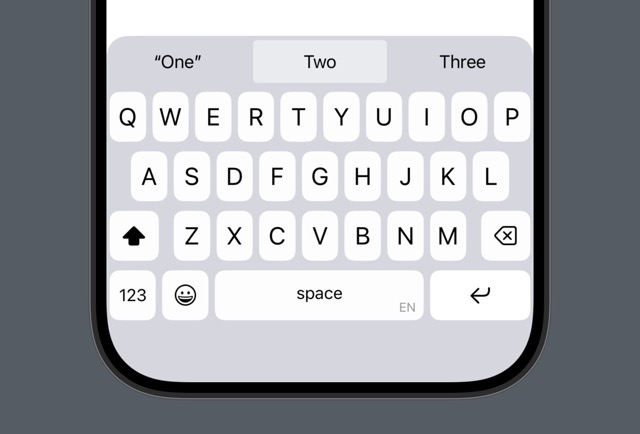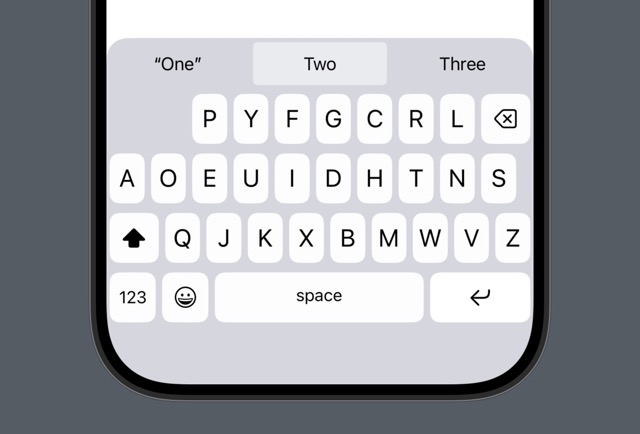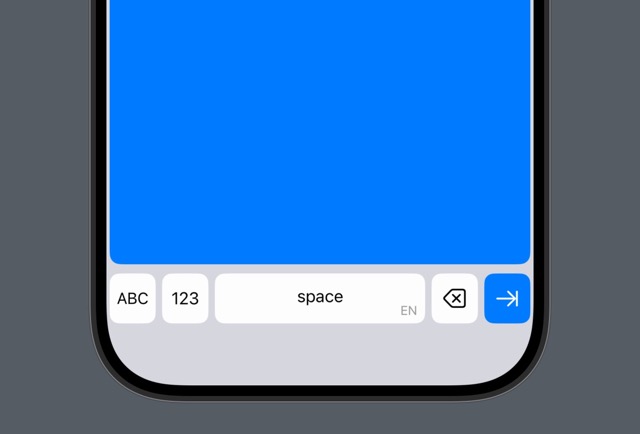Layout
A powerful and flexible layout engine
A flexible keyboard layout is at the heart of a software keyboard, with many considerations like the current device model, screen orientation, locale, etc.

The KeyboardKit layout engine is flexible and adapts to many factors, like device and keyboard type, locale, etc. You can easily customize the layout further, by resizing, adding and removing keys.
👑 KeyboardKit Pro
KeyboardKit Pro unlocks additional layouts like .qwertz, .azerty, .colemak, and .dvorak, as well as locale-specific layouts for all 75 supported languages.


KeyboardKit Pro also unlocks views and utilities to let you use the same layout concept to add extra input rows, replace the keyboard with a bottom bar, etc.


KeyboardKit Pro also unlocks extra KeyboardLayout capabilities to make it easy to customize layouts.
Documentation
The information on this page is shortened to be easier to overview. For more information, see the online KeyboardKit documentation.
Features
KeyboardKit has a lot of core features. You can upgrade to KeyboardKit Pro to unlock pro features. Features that are marked with pro are exclusive to KeyboardKit Pro.
Essentials
KeyboardKit provides essential models, features & views.
Keyboard View
KeyboardKit has a native-looking, customizable keyboard view.
Actions
KeyboardKit lets you trigger and customize keyboard actions.
AI Support
KeyboardKit Pro unlocks features that are needed for AI keyboards.
App Utilities
KeyboardKit has tools for setting up great keyboard apps.
Autocomplete
KeyboardKit Pro unlocks local autocomplete and predictions.
Callouts
KeyboardKit can show input and secondary action callouts.
Clipboard
KeyboardKit Pro can manage the system clipboard and user clips.
Device Utilities
KeyboardKit can identify device types, capabilities, etc.
Dictation
KeyboardKit Pro can trigger dictation from the keyboard.
Emojis
KeyboardKit has emojis models, an emoji keyboard, etc.
Escrow
KeyboardKit Pro offers Escrow Services to enterprise customers.
External Keyboards
KeyboardKit Pro can detect if an external keyboard is connected.
Feedback
KeyboardKit can trigger audio & haptic feedback.
Fonts
KeyboardKit Pro lets you type with custom unicode fonts.
Gestures
KeyboardKit can trigger & handle rich keyboard gestures.
Host Application
KeyboardKit Pro can identify and open specific applications.
Layout
KeyboardKit has dynamic and fully customizable layout engine.
Localization
KeyboardKit supports 75 locales, with localized assets & layouts.
Navigation
KeyboardKit lets you open urls and apps from the keyboard.
Previews
KeyboardKit has built-in support for SwiftUI and in-app previews.
Proxy Utilities
KeyboardKit can access the full document content in more ways.
Settings
KeyboardKit has tools for in-app settings & System Settings.
Status
KeyboardKit can detect & handle keyboard and Full Access states.
Text Input
KeyboardKit Pro unlocks tools to let you type within the keyboard
Styling
KeyboardKit lets you design your own beautiful keyboard styles.
Themes
KeyboardKit Pro unlocks a theme engine with many themes.